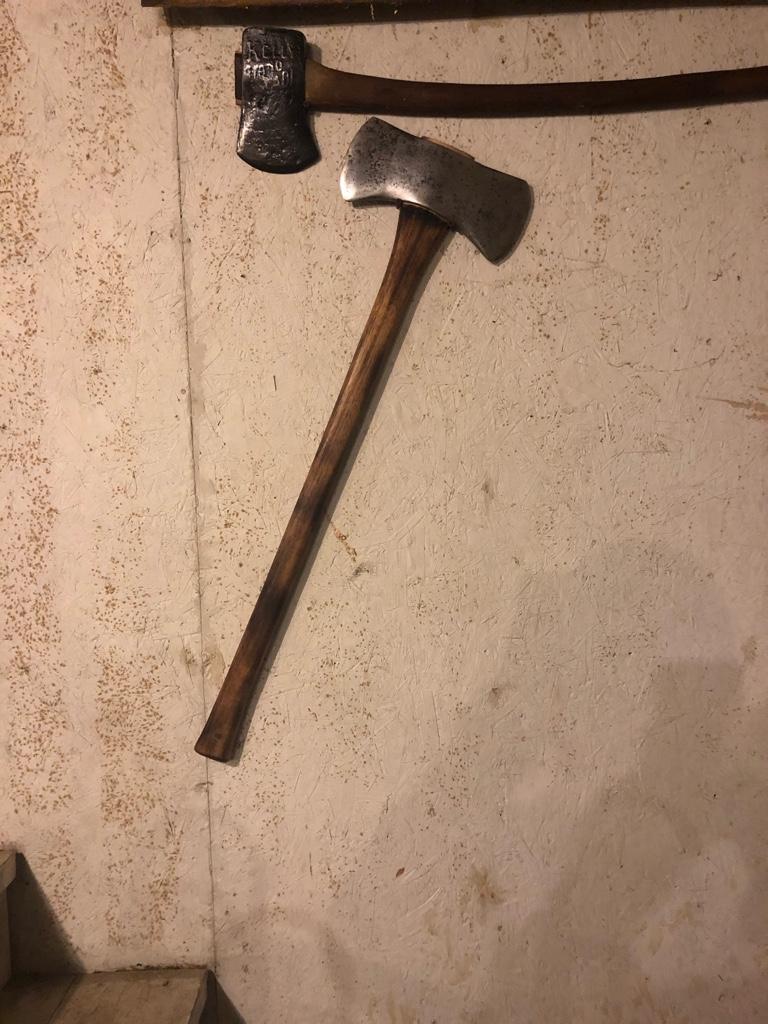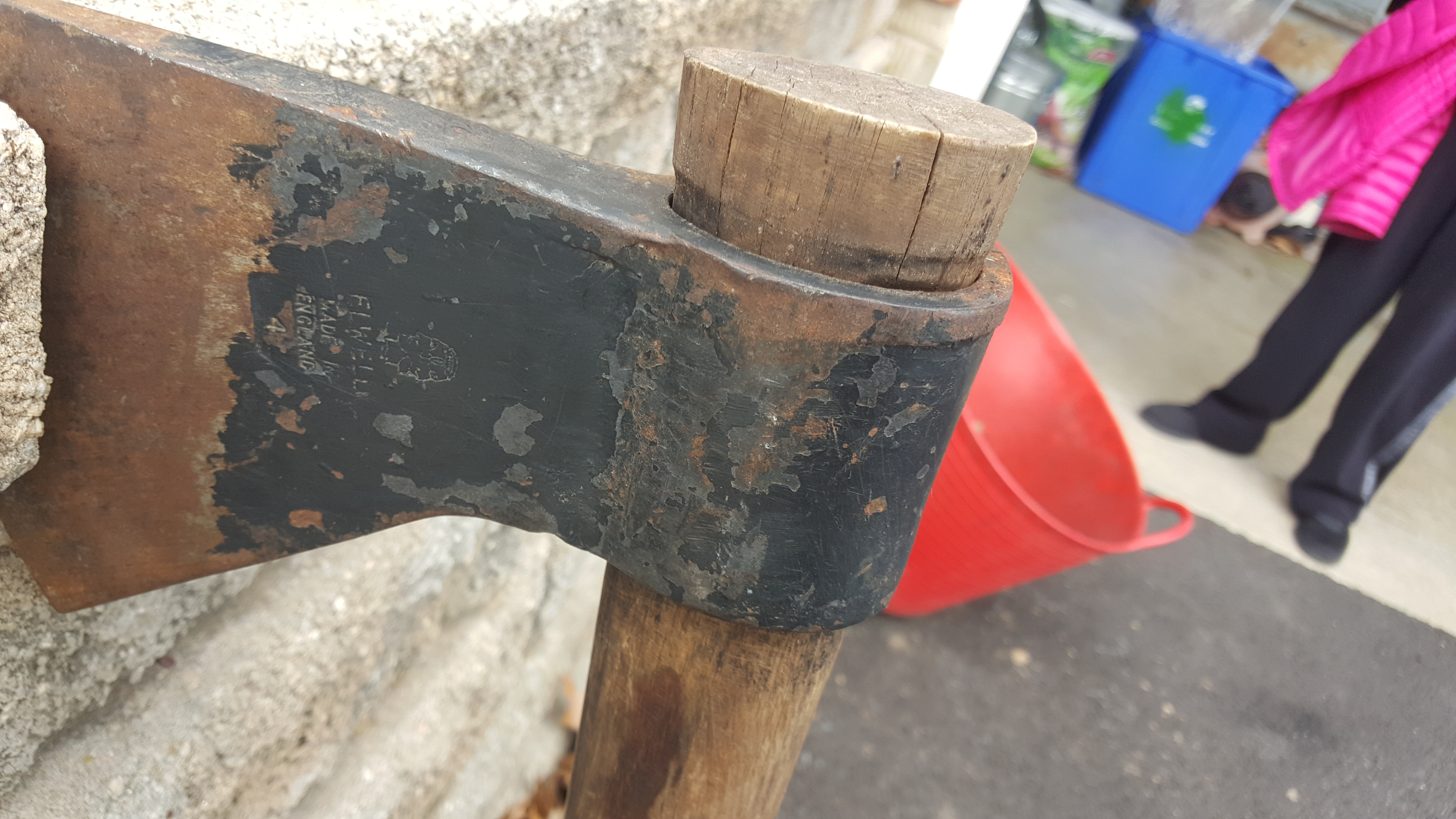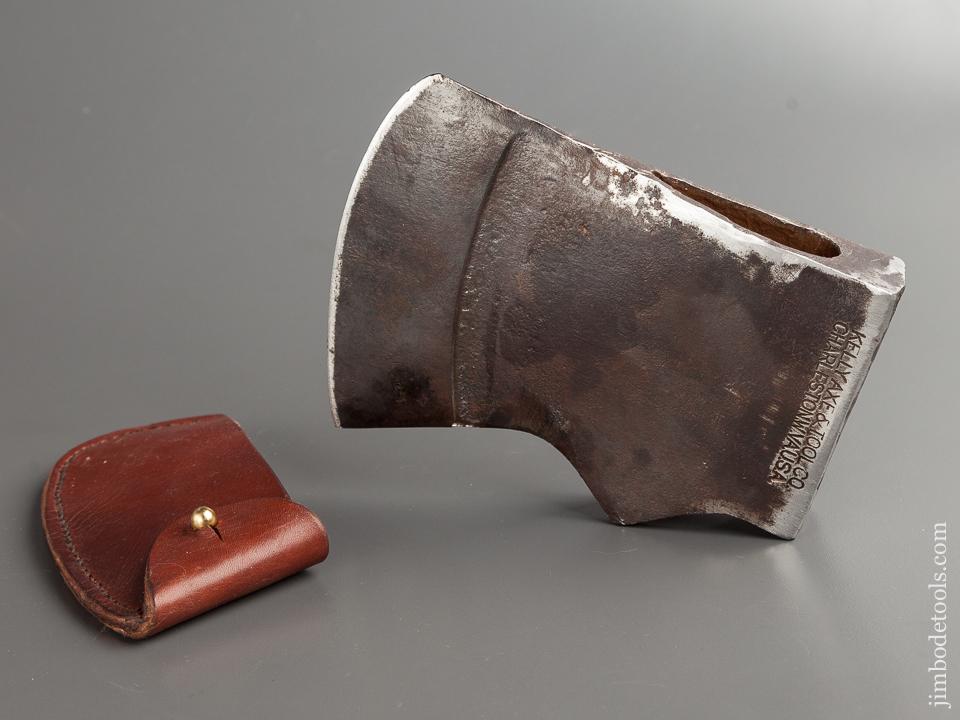Esq1997
ArboristSite Operative
That’s where I discovered it!!!

I really like how the Watco oil finished the handle. Switched from BLO for last few axe builds.







Thanks, you beat me to it. I was going to say it's one Bad Azz axe.Shows the quality of the steel
Idk anything about it, but I don't think that's a 1.I’ve been scanning the web for quite some time and have not been able to identify this axe by the “10” stamped under the bit. Kind of odd. It’s a huge axe.


You can see a 4 under the Elwell logo. I would assume that means a 4 pounds? The handle is quite heavy, the whole thing feels like 8-10 ponds. It's heavy, and I would not like to be on the user end all day!You got the Elwell Inn the end then!
That first axe is very old and I'd swear I've seen that "lip" at the edge before, but I can't remember where. It might have been called a "Chip Slinger" or something similar. edit: Yep, a Kelly Chip Slinger!I got out bid on some nice heads. One Collins with an absolute perfect poll, a double with two old hand planes, went to $50. I think the buyer wanted the old planes. Trouble with the online actions. I've got several nice axes because the person wanted the other items in the lot. Here's the four I brought home.





Stanley's are middle line. They were made by Mann, and Mann also made axes for Collins from the 60's onward. I have a beefy Stanley, it was my first single bit and it is a good user, but it has flat cheeks and isn't the greatest. It splits well, is a nice wedge-beater, and is made from good steel, but I wouldn't use it for felling or bucking. You can see it on the far right side of this picture.I like to know the history of my axes. I found quite a bit on Elwell going back to the 1500's.
I always thought the Stanley's were middle of the line quality axes, but I may be wrong. Mann Ax bought out Collins's holdings in the US in 1966. But, Stanley bought out their holdings in South America and Mexico. Stanley had a no compete clause in the purchase, so Mann could not market products with the Mann or Collins name on them south of the border. If you look at the pic of the Stanley, you can see an M at each end of the logo. Some of the Ax historians "think" that may stand for Mann Made, and Mann actually made the axes for Stanley. Just an educated guess.

I only recall hearing of two manufacturers with stamps on the bottom of the axe, one was an eastern company, either Snow and Neally or Emerson and Stevens, and the other was Mann so I'd guess it's a Mann. To the best of my knowledge, only Kelly, Warren, Mann, Sager, and maybe Plumb made Pugets in any real numbers, so it is almost definitely one of them at least. No, @TNTreeHugger I do not think it's Dutch. Americans were the only people to make large quantities of double bits, and we are the only nation to produce Puget Sound axes, so named because they were designed for the massive old growth trees in the PNW.I’ve been scanning the web for quite some time and have not been able to identify this axe by the “10” stamped under the bit. Kind of odd. It’s a huge axe.
Enter your email address to join: